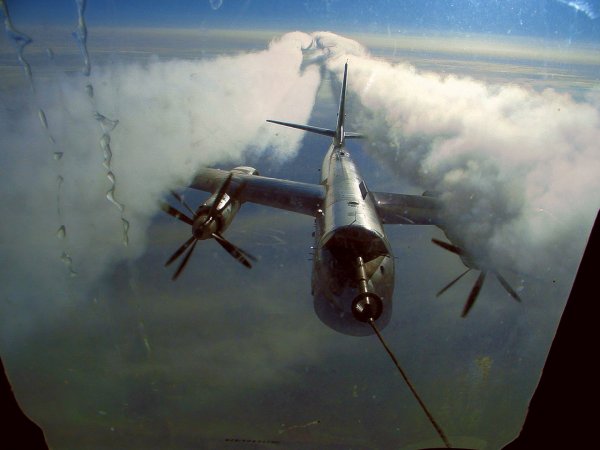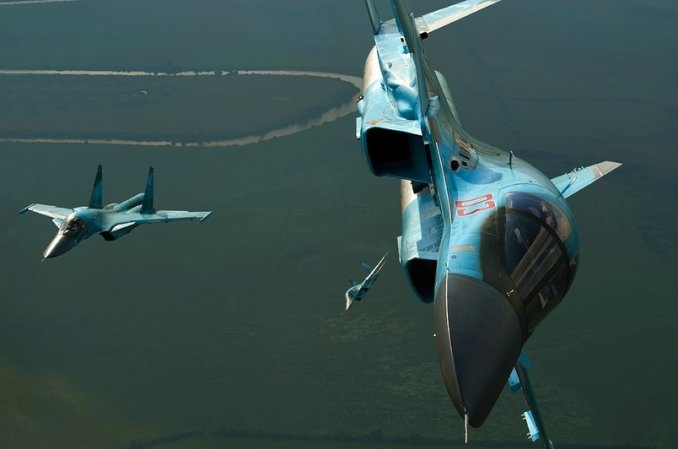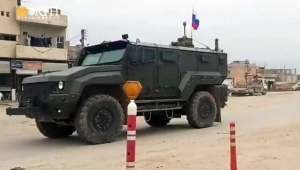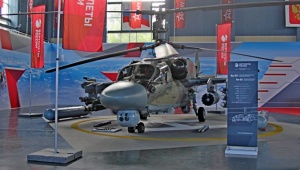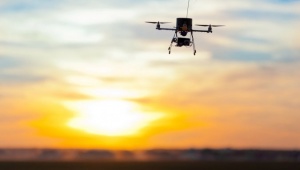Those cosmic amounts of money spent by the non-belligerent country on its army must have been definitely "pop up" somewhere. For the first time it happened in Crimea and Ukraine. Assault suits and arms of the so-called "polite people" surprised not only foreign but Russian experts, too. However, at that time Russian army did not even step into the water but merely checked it by tiptoes. Few people had a thought that in 1.5 years Russian military would plunge into a real demonstration of its combat novelties and surprise the world not only with outfits and armored vehicles but with high-priced missiles, guided bombs and strategic missile-carrying aircraft.
Strategic Air Force
Combat employment of long-range missile carriers Tu-160 and Tu-95MS was a debut not only for these two types of aircraft but also for the whole Russian Strategic Air Force. Remarkably, that happened in the year when Russian long-range aviation celebrates its 100th anniversary. Even Soviet Union had never used ‘strategists’ before, though there was a plenty of opportunities and reasons for that. The cold war and tens of local conflicts were in full bloom, so the Soviets were fine with rattling the saber. However, things had never come to strategic aircraft.Speaking of the post-Soviet era, Russian "Swans" and "Bears" were firstly used on November 17, 2015. The warplanes were brought into play right after Putin’s statement that air crash of the flight A321 with Russian tourists was a terrorist act. Approaching from the Mediterranean Sea, Tu-160 and Tu-95 launched even more cruise missiles than the Caspian Flotilla’s ships did earlier. The first use of strategic aircraft was soon followed with the second one. Obviously, these warplanes will continue to play its part at the Syrian theater.
The battle debut of aircraft of this type came as a surprise to wide public, though Mil.Today, having analyzed information from different sources, did anticipate the use of "strategists" on the Syrian stage back in the first half of October.
So, what are these airplanes? Jet-propelled Tu-160, also known as "White Swan", is the largest and the most powerful supersonic airplane in the history of military aviation. Its development was a response to Americans’ efforts on creation of their own strategic airplane, later named B-1. In its turn, turboprop Tu-95MS is a Soviet analog to American B-52 Stratofortress. Along with its American "fellow", Tu-95 has been in service for almost 60 years now, which is unprecedented for airplanes.
Ships of Caspian Flotilla
Throughout the post-revolutionary history, the Caspian Flotilla (CF) engaged in the naval warfare only in 2015 by a cruise missile strike upon militants of the Islamic State*. Prior to that, only CF marines happened to fight in the Chechnya conflicts. However, a small CF landing party on Iranian seashore during the World War II should be mentioned as well.Thus, not only certain Caspian ships of Projects 11611K and 21631 got baptism by fire but the whole flotilla’s surface force. The Caliber cruise missiles were launched against terrorists by one Project 11611 ship Dagestan and three Project 21631 Buyan-M ships, namely, Uglich, Grad Sviyazhsk and Veliky Ustyug.
Cruise missiles
Although cruise missiles have been already discussed above, this kind of weapon undoubtedly deserves a separate talk. The Caliber cruise missile became an absolute breakthrough of this conflict, having gained an exceptional popularity just several hours after the defense ministry posted official video of salvo launch by the Caspian Flotilla ships.Memes and caricatures with Caliber missiles appeared and circulated on the web very fast. It seemed that soon hustlers would sell clothes and various trinkets and souvenirs demonstrating this kind of weapon. By the way, these missiles have been launched many times at trials and exercises before, but only specialized media and military fans attached importance to that.
Performance features of the 3M-14 missile, which was launched against Syria by the Caliber system, are classified and not on open access. Some experts say this missile’s range is up to 2,500 km at the minimal altitude of 50 m and the speed of about 290 mps (1,044 kph). Speaking of the circular error probable (CEP), the Russian defense ministry reports it is only three meters. That means that serviceable missiles, without failures in homing warhead or any other negative factors, will not deviate from a target by a distance larger than this figure. For information, one Tomahawk cruise missile, analogous to Caliber, costs about $ 1.5 mln. Logically, cost of the 3M-14 missile is about the same.
Another cruise missile used in Syria was X-101 air-based missile carried by strategic aircraft Tu-160 and Tu-95. Although it has not gained the same popularity as Caliber (perhaps, because videos of its launches are not as impressive as missile salvos of the surface ships), it is by no means less dangerous.
Payload weight of the ?-101 missile is 400 kg, while overall weight is up to 2,400 kg with only 1,200 kg of fuel. These large figures are conditioned by long range of the missile. It is capable to hit a target 5,500 km away from the launch site. CEP of the missile is five meters.
GLONASS-guided air bomb
Another surprise under wings of the Russian air group deployed in Syria was the KAB-500S satellite-guided air bomb. The point is that several years prior to Syrian conflict it was reported that Russian Air Force had criticized that bomb due to high cost and imperfections. Moreover, throughout these years there were no reports of the use, commissioning or, at least, further tests of these bombs, so nobody expected to spot it under Su-34 bombers’ wings in Syria.The KAB-500S bomb is homed automatically in accordance with coordinates appointed before the drop. A pilot marks a target with a kind of a ‘black spot’, and after dropping the bomb moves toward it. The bomb’s CEP is 5-10 meters, dropping range (except for an engine-propelled variant) is 6-8 km.
Su-34 strike fighter
Emerging of this warplane in the Syrian skies cannot be called a combat debut, as earlier Su-34 airplanes took part in the South Ossetia conflict. At that time, however, they were used not for their intended purpose but cleared sky from Georgian air defenses for other Russian attack aircraft. The matter is that Su-34 has a great electronic warfare potential thanks to the Hibiny onboard jammer.Seven years later, this warplane again happened at the cutting edge of the Russian air campaign in Syria. At this time it performed its core tasks, primarily, destruction of ground targets. However, it has not become the key power of the Russian air group in Syria, mostly because other "workhorses" of Russian Airspace Force, Su-24 bomber and Su-25 assault aircraft, are still in the ranks. Only six Su-34 jets are stationed at our airbase in Latakia, while overall number of other Sukhoi strike airplanes has been increased up to 24.
What may be next in Syria
As was said above, by using some types of weapons Russian army really surprised even military experts. However, there were some disappointments. For instance, many people expected the Russian strike helicopter fleet in Syria to be represented with Ka-52, Mi-28 or at least Mi-35, which appeared in Crimean operation, but Russia sent "old-timers" Mi-24 to Syria instead. Who knows, perhaps, the next Russian hardware applied in the action area for the first time would be newest assault helicopters.* Islamic State – a terrorist organization banned in the Russian Federation.
Alexey Bogatischev















